 Gugong in a no-sunshine Sunday
Gugong in a no-sunshine SundayYa-Wen mentioned that these carps were not this big and in a large number when she was here last time (how long has it been?).
Carps, specifically koi, are considered to bring a good fortune to an owner since when Japanese farmers domesticated them for food and for pleasure from their colors generated by mutated genes.
Koi can survive and eat little (or nothing at all) in sub-10C cold water of winter months.
I believed that the water in Dragon Lake of National Palace Museum (NPM or Gugong) today was not cold enough to discharge these koi from gulfing food that a girl had been throwing down for almost half an hour now (she really had lots to give to the koi).
I quickly snapped the actions of these beautiful, colorful koi (even though I saw a very large black (rather ugly) one too).
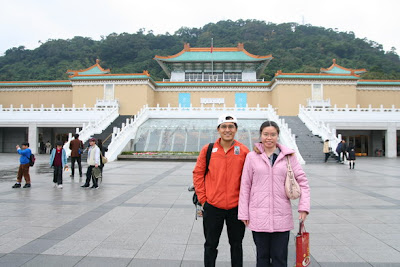 Ya-Wen and I in front of Main Exhibition Hall
Ya-Wen and I in front of Main Exhibition Hall
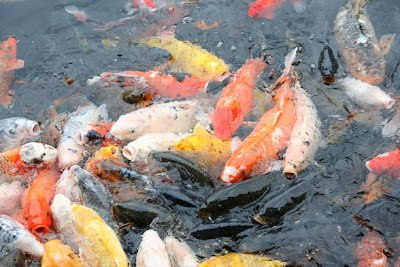 Colorful koi in Dragon Lake of Chih-shan Garden
Colorful koi in Dragon Lake of Chih-shan Garden
Bright colors of these koi were very different from those rich deep colors and intense light and shadows of Baroque paintings in “Splendor of the Baroque and Beyond: Great Habsburg Collectors,” a special exhibition of NPM we saw this morning.
These paintings involving subjects such as portraiture, natural history and religion often depicts a pronounced moment of subject, similarly to the movement of these koi fighting for food.
These European style paintings were contrastingly housed in Chinese architect style exhibition hall.
The famous treasures of Chinese Emperors, however, are housed in the main exhibition hall, which will be the destination of my next visit for a full day tour. A fun short movie introducing NPM, a much shorter version of "Night at the museum" but without Ben Stiller, made me want to spend a good quality time with the treasures. Since the opening time remained only couple hours today, Ya-Wen and I decided to enjoy a walk in this traditional Chinese garden of the Sung and Ming dynasty style, decorated by colors of late-winter blossoms and birds, where I stumbled into the koi.
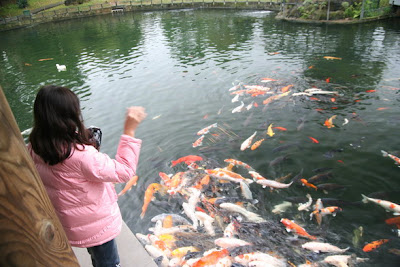 A feeding girl looking down at gulfing koi
A feeding girl looking down at gulfing koi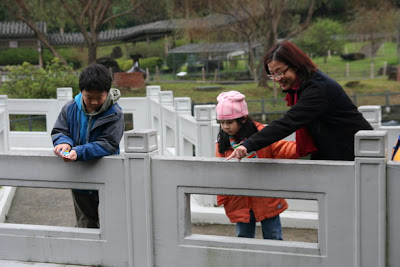 Mother with two children admiring koi
Mother with two children admiring koi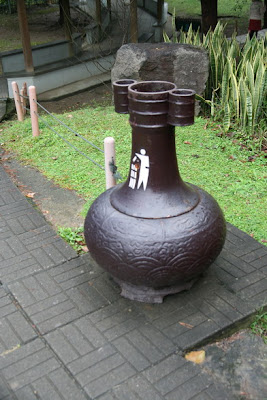 Treasury Style trash jar in Gugong.
Treasury Style trash jar in Gugong.
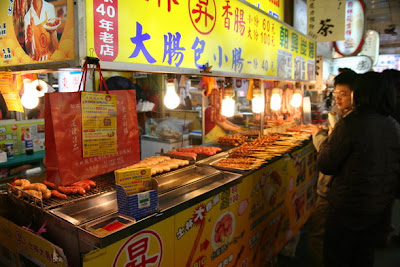
Yummy Da chang bao xiao chang stand in Shilin Night Market
Leaving colorful koi behind, I faced colorful xiaochi in Shilin night market (well, smells too). Ya-Wen introduced me to various dishes such as famous oyster omelet (e a jian), squid soup, da chang bao xiao chang (big sausage wraps small sausage), da bing bao xiao bing (big bun wraps small bun), cold noodle and infamous (fried) stinky tofu. All of dishes were good in their own right but I must make my own comments: Thais have a similar dish to e a jian but, instead of oysters, use mussels, bean sprouts along with tofu and ground peanuts. It is called หอยทอด (pronounces hoi tord; fried mollusk) and tastes much better than e a jian. While da chang bao xiao chang tasted very yummy, da bing bao xiao bing was not impressive. After I tasted a series of colorful dishes, I hopped on the red and blue lines back home in a loud underground tube. Even though the sun did not brighten up colors of today, thanks to Ya-Wen my third Sunday in Taipei was painted colorfully.
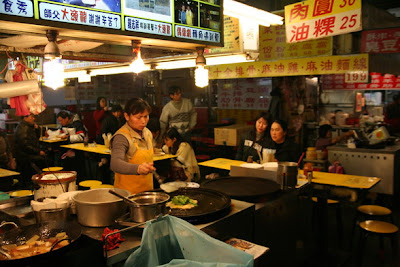 Cooking
Cooking e a jian
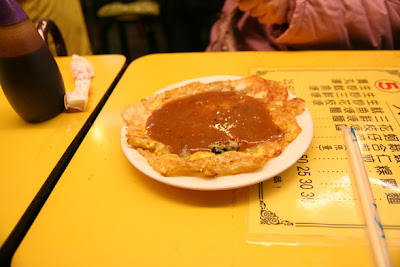 Famous Taiwanese
Famous Taiwanese xiaochi: e a jian
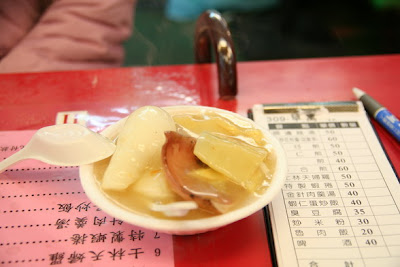 Squid Soup
Squid Soup
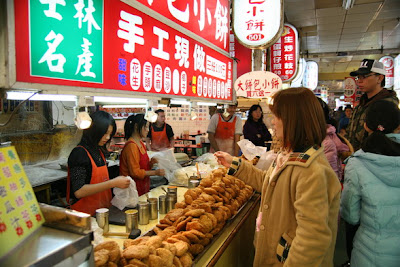 Shilin's
Shilin's Da bing bao xiao bing
stand
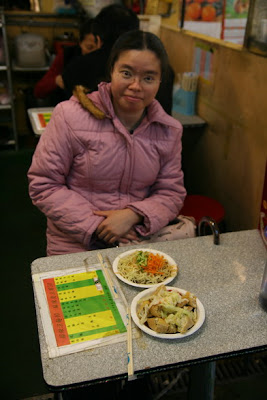 Ya-wen with cold noodle and fried
Ya-wen with cold noodle and fried Chou doufu; the former is quite spicy.
No comments:
Post a Comment